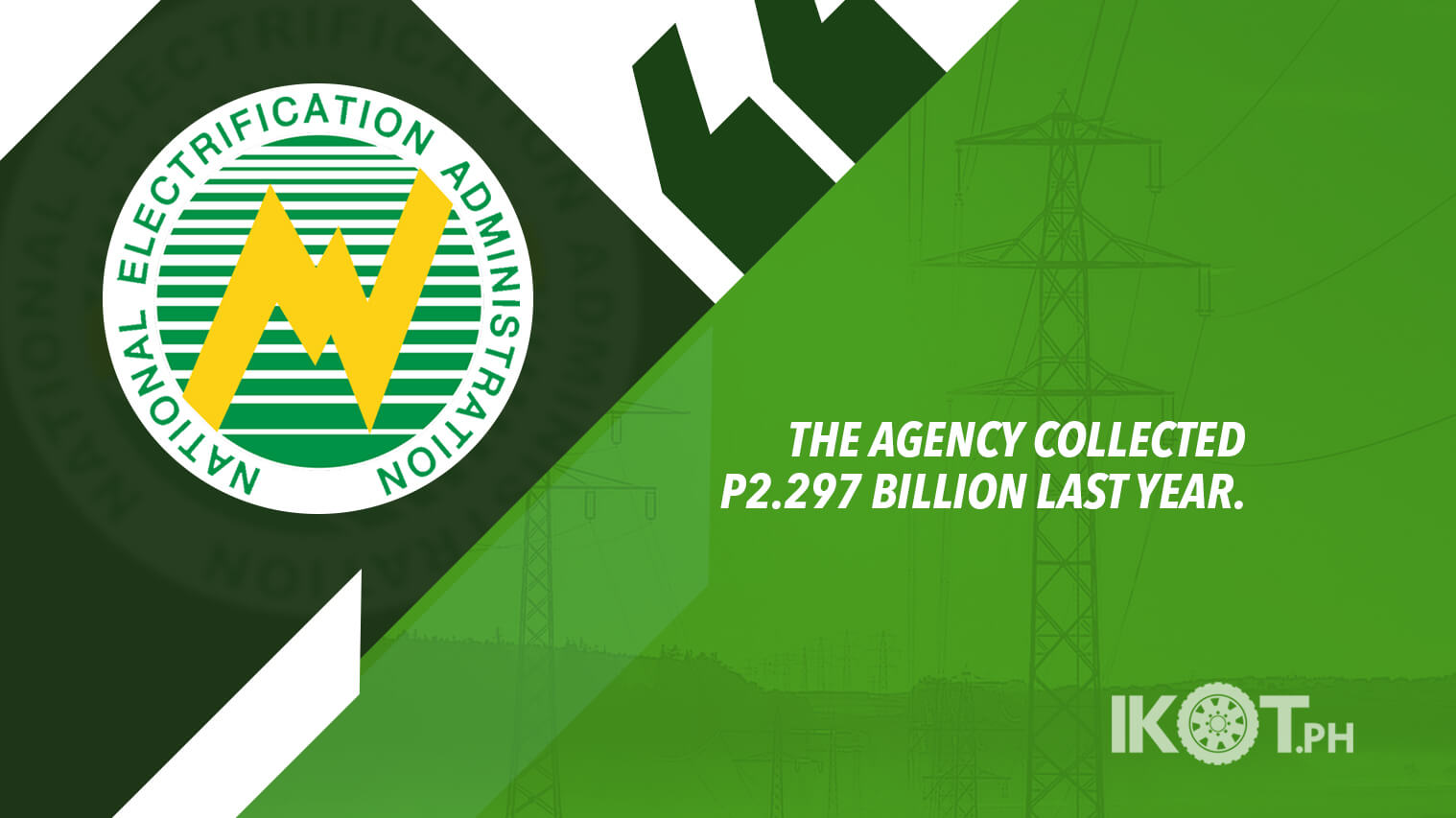The National Electrification Administration (NEA) ended 2019 on a high note as it registered a collection of over P2 billion on loan amortization payments from the electric cooperatives (ECs).
Based on the collection performance report submitted by the NEA Finance Services Department to Administrator Edgardo Masongsong, the agency collected P2.297 billion last year, an increase of P338 million from the corporate target of P1.959 billion.
Milagros Robles, acting director of Finance Services Department, said the 2019 collections also surpassed the P2.263 billion the NEA collected in previous year (2018) by at least 15 percent.
The 2019 collections also surpassed the P2.263 billion the NEA collected in 2018.
The electrification agency attributed the improvement in collection performance to the increase in advance payment of amortizations and outstanding loans of the ECs.
“The early payment of outstanding loans by some ECs amounting to P94.35 million and increase in advance payment made by ECs of P283 million contributed to the attainment of high collection efficiency,” Robles reported.
The top five highest-paying ECs last year were Occidental Mindoro Electric Cooperative, Inc. (OMECO), Nueva Ecija II Electric Cooperative, Inc. – Area 2 (NEECO II – Area 2), Misamis Oriental II Rural Electric Cooperative, Inc. (MORESCO II), Central Pangasinan Electric Cooperative, Inc. (CENPELCO), and First Laguna Electric Cooperative, Inc. (FLECO).
The NEA has been offering financial assistance to the ECs, through various loan windows, to bankroll their various capital expenditure projects (CapEx) and rehabilitation of power distribution systems damaged by calamities.
The agency’s lending program includes regular, calamity and concessional loans, stand-by and short-term credit loans, single-digit system loss loan, renewable energy loan, and modular generator sets loan.
The short-term credit facility is intended to finance the EC’s monthly shortfall in settling their power accounts with the generation companies and the National Grid Corporation of the Philippines (NGCP).
The stand-by credit facility, on the other hand, is meant to strengthen the EC’s creditworthiness with the generation companies and the electricity market operator.

